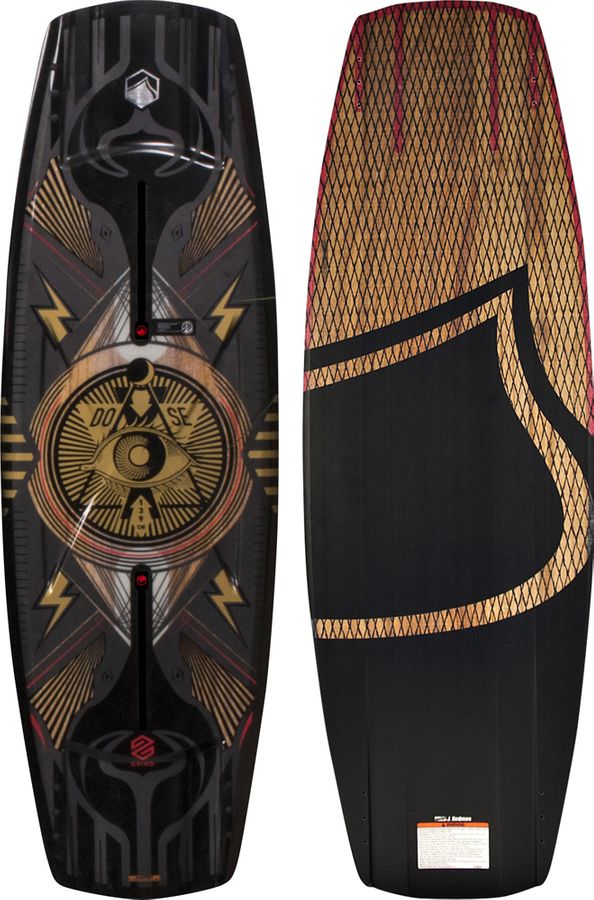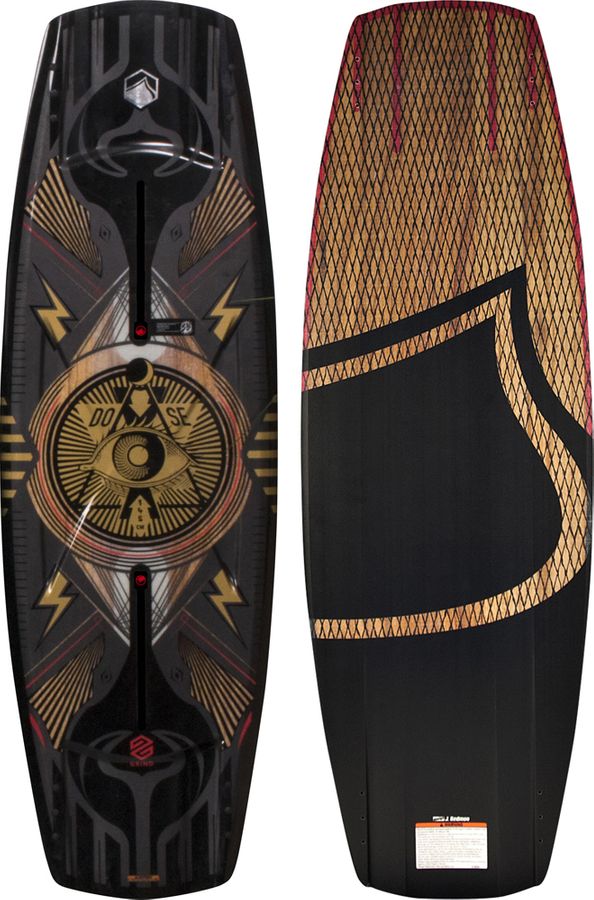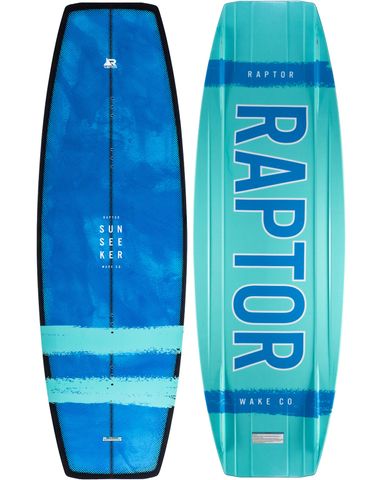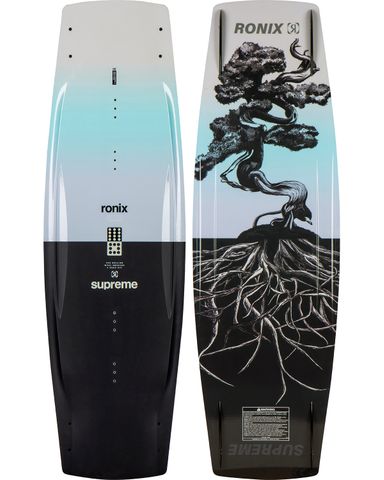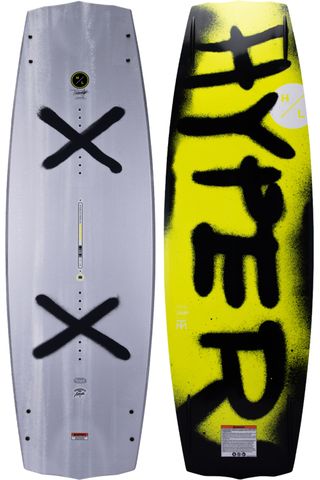Choosing your first wakeboard or upgrading an old board shouldn’t be a daunting task! All wakeboards are designed to suit a specific riding style or ability. In this article we’ll walk you through the important features, shapes, constructions and what makes wakeboards different from one another. We begin by categorising a wakeboard into one of three ability levels: Beginner, intermediate or advanced.
ABILITY LEVELS:
- BEGGINER: A beginner’s wakeboard, as the name implies, is suited to riders new to the sport. Beginner wakeboards will be forgiving, stable and generally easy to ride ultimately assisting rider progression. Beginner wakeboards feature strong channel features and deep, centre-mounted fins [1.75”] which assist straight-line stability. Wakeboarding is one of the only board sports in the world where your shoulders and hips are not always parallel. Your body is crossed up riding toe-side and more inline riding heel-side. Beginner boards take this into consideration with popular models featuring an asymmetrical shape aiding control when on the toe-side.
- INTERMEDIATE: Intermediate wakeboards build on this but dial down certain features to appeal to a wide range of riding styles. Most intermediate wakeboards forego centre fins and adopt dual, outside-mounted fins [0.75” - 1.0”] which assists confident riders allowing them to produce greater edge-hold. Intermediate wakeboards come in a range of shapes and rocker profiles but are mostly universal in their riding style.
- ADVANCED: Advanced wakeboards are designed for riders expanding their trick-bag with flips and spins. Unlike intermediate wakeboards, advanced boards feature specific constructions, shapes, and rocker profiles each tailored to unique riding styles. Riders can choose between a board that has an aggressive riding style with strong edge hold and explosive take-offs, a board that is more relaxed, smooth, and ‘surfy’ or anything between.
PROFILES:
- CONTINIOUS ROCKER: Down to the nitty gritty! The profile of a wakeboard drastically changes its personality and riding style. The profile of a wakeboard is defined as the boards shape when viewed on its side from tip to tail. A ‘continuous’ rocker wakeboard features a smooth, consistent arc with no flat spot interruptions. Continuous rocker wakeboards carry more top-water speed, feature smooth, consistent take-offs and softer landings. While a continuous rocker board may not have as much ‘pop’ as its 3-stage rival, it is more likely to carry you further out into the flats. Continuous rocker boards are easier on the body but also a popular option behind large boat wakes where a lack of pop is not a concern.
- 3-STAGE ROCKER: Continuous rockers arch nemesis, ‘3-Stage’ rockers feature a flat spot between the bindings. This flat spot interrupts the flow of water but instead creates a solid platform for the wakeboard to ‘pop’ off when releasing from the top of a wake. 3-stage wakeboards often feel ‘loser’ on the water and may not carry as much top-water speed as continuous boards, however they are more likely to give more punch and go higher off a wake.
CONSTRUCTIONS:
- Wakeboard constructions have changed significantly over the years with the introduction of high-end performance foam and carbon fibre laminates. All beginner wakeboards feature a traditional PU (polyurethane) foam core and standard fibreglass laminates holding it all together! This construction is tough, durable, forgiving and relatively inexpensive.
- In the early 2000’s high performance foams such as polyvinyl chloride [PVC] were introduced into advanced wakeboards. PVC foam cores are more responsive and lightweight resulting in a wakeboard that feels more ‘explosive’. More recently, various other technologies such as carbon fibre laminates or stringers have been added further improving strength and performance.
SIZE GUIDE:
Choosing the correct size of wakeboard depends on your weight and the style of board however wakeboarder preferences can be considered with most wakeboards are available 3 or 4 size increments. Large boards provide more surface area and buoyancy however become slightly heavier and bulkier underfoot. If you are purchasing a wakeboard to be shared amongst a group, it is important that the largest rider’s weight be accounted for. Personal preference may be considered when choose a wakeboard size; It is likely that a rider may choose to size-up as a larger board with more surface area will aid deep water starts, increase stability, and reduce drag.
- 120 cm (Up to 40 kg)
- 125 cm (40 - 50 kg)
- 130 cm (50 - 60 kg)
- 135 cm (60 - 70 kg)
- 140 cm (70 - 85 kg)
- 145 cm (85 - 100 kg)
- 150+ cm (90+ kg)
Liquid Force 2017 Dose Shane Wakeboard
Description
Shane has been riding for LF for over 20 years and during that time he has ridden almost every type of board in every type of condition. Rather than carrying a “quiver” with him on his travels, he prefers a board that can handle any condition and the DOSE is just that board. Most recently Shane has been riding more park than boat, so this board is made with more flex throughout than a typical boat board. This is especially true in the nose and tail of the board which features the liquid rail Flex Zones giving the board a more sensitive feel on rails. The bottom is clean without channels and features a single to triple concave off the tips which provides lots of speed around corners or into wakes. When Shane is riding behind that boat, he prefers to put on the quad fins that provide more stability and control. Our new Flex Track comes standard on this board, providing the ultimate control and feel while edging into the wake or tail pressing a flat bar. If you are spending more time at the park, but still spend quite a bit of time behind the boat, the Shane version of the DOSE will be your ultimate one board “quiver”.
Specifications
• Full Wood Profiled Core
• Vector Net
• Pro Glass Layup
• LF Slider Quad Fin Setup
• LF Exclusive GRIND Base
• LF Exclusive Liquid Rail
• Concaved Beveled Rail
• Blunted Square Tail
• Single Concave through Center
• Triple Concave exiting tail
• Flex rating of 7
• Performance of 6-10





